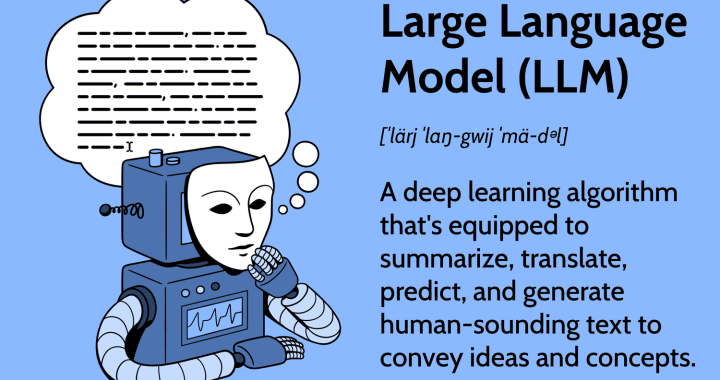Roberto Benigni does a fantastic job in his film about the years before and during WWII, La Vita E Bella, showing that humor can save a child’s life, or at least get you through tough times. Now, I won’t spoil it, if you haven’t seen it, because you must. But what I can say, after watching this powerful film for the first time last weekend, is I lost all desire to continue working on my novel in progress. I decided it’s done.
(Creds to my colleague at work who recommend the film!)
Closing the laptop, and walking to the kitchen to debrief the film with Ela, I couldn’t help but admire what we had just seen. Could it be called a comedy? It isn’t your typical drama. More of the intersection between these two roads: since one offers an exit lane from the other; a statement on how we might live our dramatic lives with a little more heart: calling out for keys when we need them, warning folks to get out of the way when our car breaks are cut, or stomping our foot when we don’t want to take a shower.
Naturally, the more I thought about these details, the more they came together to form one big idea. Maybe the war itself was a game played by titans, with real tanks not toy ones. Maybe Guido isn’t the only one making up stories, when more than half of the population believes whatever lies the government tells them about race and superiority.
And his horse named “Robin Hood”? What better symbol of anti-authoritarian could you get?
Now, I’m mentioning this about symbols and details because for Ela they are the last thing to consider in a good story. For her, and most story-lovers, what matters is a strong opening, an ending worth the middle, and memorable characters, with tearful struggles and arm-raising triumph throughout. Without these emotions, what’s the point? All you have is chatter and obscurity.
On the other hand, for me, and other text-lovers, symbols are the red blood cells of a story, carrying its nutrients and message along, giving the whole thing its color, its mass. Without these in a story, all you’re left with is gossip and anecdote, something shallow and vague.
Still, we both recognize the genius of this 1998 work, in all its layers, whether we appreciate it for the big idea we walk away with, or appreciate it from a bundle of smaller ideas put together. Top-down, or bottom-up. It’s all good.
So what’s up with the novel in reverse realization?
As mentioned, after watching the movie, I stopped working on my current book. Why: it isn’t going to develop a deeper, bigger idea that it has or doesn’t have already.
Back in 2018, I didn’t have a clear goal in mind for the book. Just a fiery feeling, a few scattered images, and a whole lot of language. I focused too much on this, the story’s delicate skin (text), followed by symbols and scenes (organs), only later to clad the book in a hard shell of a plot structure. Imagine a crustacean, always in search of a bigger shell, because I had worked backwards . . . when maybe a mammalian body would have been more advantageous, at least to grow up in, by first crafting a structure of bones, next adding organs, then wrapping the creature in a soft epidermis of pretty words.
(This metaphor is brought to you by the Quotidian Writer, with her beautifully simple depiction of a story’s bones<organs<skin; please click the name for the video.)
Not long after watching that QW video about bones and skin, I sketched my own blueprint of how stories come about, and of how they are digested. In other words, from conception to consumption, even to afterlife. Of course, this is in general, since not even I followed this schema. Yet here it goes:
- First comes the big idea, what Stephen King calls the monster in the attic that won’t leave him alone.
- Next, this big idea is approached from any number of smaller ideas.
- Then, in developing the story, you connect the small ideas in various combinations, to produce sub-stories, one-off jokes, and interesting loose ends.
- Last to consider, the most fleeting and superficial of all, is the text.
- Note here, if you’re like me, after you have written the full novel, you dress it up in a cover image, a title, comparative titles, a kick ass Amazon page with reviews and synopsis and hooks, etc, etc.
- But now, in the middle of this spectrum from author to reader, you reach a point of inflection: the price of a novel.
- After a reader has purchased a book, or received it as a gift, she has to hold it in her hands.
- Observing the first impression (the cover), taking in the title, reading the praise and reviews, she is ready to jump in to chapter one.
- The birth of a story in the reader’s imagination begins at the first line, then continues from this surface layer, its text. Why: the text is what seduces us, makes us trace the curves of the story’s body. Everything else follows after. This is why I’ve personally been so attracted to text, and focused on it intensely. To think you fell in love with anything else first, be it characters or plot, only proves that the spell has been fully cast over you, so transparent were the words, those hieroglyphs ignored but never abandoned.
- From the text, certainly until the end of the first or second chapter, we have gathered some important bits of information, to begin piecing together a bigger picture.
- Further on, a reader will dip into sub-stories, flashbacks, flashforwards, intuit subtexts, and so on.
- Past the middle of the book, holding on to those early scenes and pivotal moments, one views almost all possible relationships — a climax bringing many clashing elements into their sharpest focus.
- Finally, reaching the very last sentence of a book, we may derive the main idea.
There is an afterlife stage, but I wanted to end the list at the lucky, pretty number of 13. Yet think about it: after reading a good book, or watching a good WWII movie, doesn’t it stick around in your mind? Doesn’t it crop up in conversation and through subsequent works of art? Certainly Benigni’s film lives on in 2020, if I’m just now watching it with my wife and writing about it 22 years after its release.
Again, I didn’t set out to write a clear main idea for They Lived They Were, as one may feel La Vita E Bella has after reaching the end-credits. Instead I chased soft text, inserted symbols, then fabricated some hard outer shell roughly based on what I felt the story wanted to be about.
What a gamble to write the way I did! If skin was so important, why did I focus on it first, and then cover it up with everything else. Wouldn’t it have been better displayed on top of all the other elements of a story?
Referencing the list above, I confess that I started with the humblest of #1s (actually not even a humble big idea, but a sprawling, big feeling, a #0). Then I leaped to #4, costing me time and efficiency, as I worked backwards to add connections and symbols and structure.
Why? There is another film to blame, still Italian, still about WWII, but much older, this culprit to blame for my novel-in-reverse predicament.
In December 2017, I rewatched an Italian film set during the years after WWII. Ruins amid construction sites, celebrities hunted by the original Paparazzo, and one lonely reporter failing with every woman in his life — his insufferable wife, his black-eyed lover, and even a bodacious American actress visiting Rome. It won the Palm d’Or at Cannes Film Festival in 1960, is called La Dolce Vita, and must be seen twice, minimum, to get it.
The first time I saw it was in ’15, an uncle having shared the film. It completely hypnotized me. Back then, I wouldn’t have been able to even describe it, let alone explain what it was about. But it prompted much research. The first thing I learned was that it inspired Sophia Coppola’s classic Lost in Translation, a quirky sleeper that makes more sense when paired with its Italian predecessor. The second thing, it is film critic Roger Ebert’s favorite movie, the one that got him into the game. Lastly, speaking with my father, who positions Fellini’s masterpiece beside his subsequent, more introspective film, 8 1/2, it becomes clear that La Dolce Vita is a superficial film about superficial people. Or in his words: “8 1/2 is vertical, while La Dolce Vita is horizontal.”
To me, that’s genius. So, when I rewatched it two years later, with my brother, it resonated all the deeper — deeper than its skin-deep characters. Like a sexy body the first time you cast eyes upon it you just drool; maybe the second time you see it you get more acquainted.
Remember the final sequence, with the manta-ray dragged onto shore, with the protagonist looking out at the young girl smiling back at him, in all her innocence? Personally, when I rewatched that scene, two opposites clashed inside of me in a sparkling flash:
Hopelessness vs Hopefulness . . . BAM!
Winter of ’17, the sound rang so hard that it had to be released in the form of a novel. The next time my hands were on a keyboard, an opening scene just roared out of me: shots of a Russian youth, walking down a beach, soon to play music, because he’s a DJ, torn apart by a recent break up. It all came together so fast, my spine tingling, and I knew a 400 page idea had begun to blast its way out.
Nevertheless, just as you might crawl into bed on a weekend afternoon, feeling tense and excited to couple with your lover, so positive it’s going to be one of those two-hour long sessions, how frustrated are you when after a climax at minute ten, you roll over, and pant to sleep?
Sort of bummed you feel, a little happy. Maybe you jump back at it. Maybe not.
Still, that’s how I felt after writing the first scene in They Lived They Were. It was the exciting beginning of a big feeling, but not a big idea. So because feelings come and go, the internal discord of Hope vs Hopeless did not carry me those 400 pages I knew, with a lot of palpating in the dark, were inside. Those 400 pages that now do exist.
It took about a year of meditating, workshoping, pondering, and experimenting (lots of that in this book) for an Idea One to emerge, one I could never have imagined before it showed its face from the depths of my imagination, from the spring of my Feeling Zero. An invisible cipher, just shooting ideas outward, like a spring, torn up and torn open by Fellini’s 1960 masterpiece. That’s why to divide it into smaller parts, more tangible pieces (steps 2 and 3) were impossible. Until I reached an actual idea, the #1.
And that’s the outer shell, what you see plain and simple from the first real page of the book, after an unusually long title “Part 1” page, in the form of an overture/prologue.
Should I spoil it, by telling you what it is?
Nah.
But imagine a crab. He ain’t all that bad, eh, in a book set at the beach? Anyway. You tell me. Like I said, for me, done.




